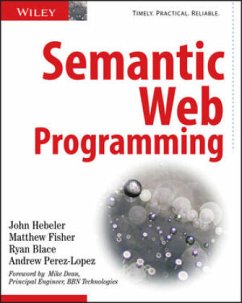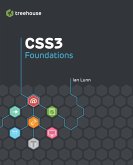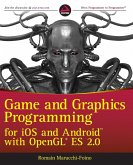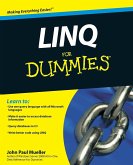The next major advance in the Web-Web 3.0-will be built on semantic Web technologies, which will allow data to be shared and reused across application, enterprise, and community boundaries. Written by a team of highly experienced Web developers, this book explains examines how this powerful new technology can unify and fully leverage the ever-growing data, information, and services that are available on the Internet. Helpful examples demonstrate how to use the semantic Web to solve practical, real-world problems while you take a look at the set of design principles, collaborative working groups, and technologies that form the semantic Web. The companion Web site features full code, as well as a reference section, a FAQ section, a discussion forum, and a semantic blog.
"Semantic Web Programming" takes the semantic web directly and boldly into solving practical, real-world problems. Hands-on code examples drive the understanding of this new powerful technology that can unify and fully leverage the growing sea of data, information, and services available on the Internet. As the code examples build, the reader explores the many technologies that form the semantic web including the knowledge representations such as Resource Description Framework (RDF), Web Ontology Language (OWL), and Semantic Web Rule Language (SWRL), the programming interfaces including Jena and Sesame, and an integrated view of the tools to build and support semantic web applications. The reader will benefit from the authors' years of experience in developing large-scale semantic web solutions, building semantic web tools, and contributing to the actual semantic web standards. The reader will not only emerge with an understanding of this new powerful technology but will be able to apply it directly to his/her real-world challenges.
Key Features
- Four sections with a total of 17 chapters (25-40 pages each), 1 integrated example throughout Section 2 and 3, 10 Major Coded Applications, 25 small code examples and 25 figures.
- ~500pgs and Appendix with reference constructs
- Companion website with full code including the ability to contribute, reference section, FAQ, discussion forum, and semantic blog
"Semantic Web Programming" takes the semantic web directly and boldly into solving practical, real-world problems. Hands-on code examples drive the understanding of this new powerful technology that can unify and fully leverage the growing sea of data, information, and services available on the Internet. As the code examples build, the reader explores the many technologies that form the semantic web including the knowledge representations such as Resource Description Framework (RDF), Web Ontology Language (OWL), and Semantic Web Rule Language (SWRL), the programming interfaces including Jena and Sesame, and an integrated view of the tools to build and support semantic web applications. The reader will benefit from the authors' years of experience in developing large-scale semantic web solutions, building semantic web tools, and contributing to the actual semantic web standards. The reader will not only emerge with an understanding of this new powerful technology but will be able to apply it directly to his/her real-world challenges.
Key Features
- Four sections with a total of 17 chapters (25-40 pages each), 1 integrated example throughout Section 2 and 3, 10 Major Coded Applications, 25 small code examples and 25 figures.
- ~500pgs and Appendix with reference constructs
- Companion website with full code including the ability to contribute, reference section, FAQ, discussion forum, and semantic blog







